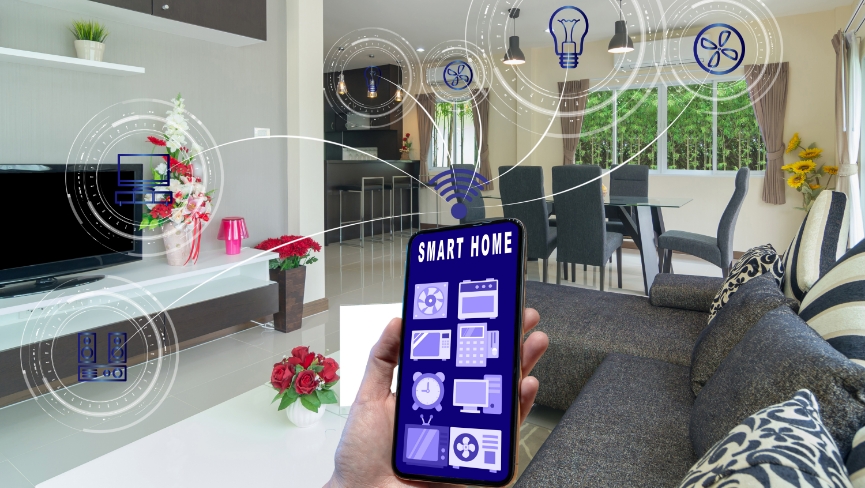
Augmented Reality (AR)
Augmented reality (AR) is a technology that superimposes computer-generated images on top of real-world objects, allowing people to interact with virtual content in the real world. AR has been used in a variety of settings, including video gaming, education, and marketing.
The basic principle behind AR is relatively simple: using a camera and some sort of display device (such as a smartphone), AR inserts virtual objects into the real world. However, there are a few different ways that this can be done. One standard method is known as marker-based AR.
This involves using a special marker, such as a QR code, which is then recognized by the AR software. The software then uses the marker to determine the position and orientation of the camera, allowing it to insert virtual content into the scene. Another common method is known as location-based AR, which uses GPS data to determine the user’s position and then inserts virtual content accordingly.
There are a number of potential applications for AR technology. For example, AR can be used in education to create interactive learning experiences. In marketing, AR can be used to create immersive product demonstrations. And in gaming, AR can be used to create more realistic and engaging gameplay experiences.
Despite its potential, however, there are still some challenges associated with AR technology. One major challenge is achieving high levels of accuracy when superimposing computer-generated images on top of real-world objects. Another challenge is developing user interfaces that are intuitive and easy to use.
Despite these challenges, augmented reality shows great promise as a transformative technology that could change the way we interact with the world around us.
The Different Types of Augmented Reality

Marker-based

Markerless

Projection-based
Each type of augmented reality has its own advantages and disadvantages. Marker-based systems are typically more accurate than other types of systems, but they can be expensive to implement. Markerless systems provide a more immersive experience, but they can be less accurate than marker-based systems. Projection-based systems are often less expensive than other types of systems, but they can be more challenging to set up and use.
How Augmented Reality Is Being Used Today
Augmented reality (AR) is a technology that superimposes digital content onto the real world. It has a range of applications across gaming, education, entertainment, and industry.
AR gaming is one of the most popular uses of technology. Games such as Pokemon Go and Ingress use GPS data to place virtual creatures and objects in the real world for players to capture or interact with. This creates an immersive gaming experience that encourages players to explore their surroundings.
AR is also being used to enhance education and training. For example, medical students can now use AR to view 3D models of the human body and see how organs interact with each other. This allows them to understand better complex concepts than they would from 2D textbook diagrams alone.
In industry, AR is used for various tasks such as maintenance, repair, and assembly. For example, Boeing is using AR headsets to help workers assemble aircraft components more efficiently. The headsets display step-by-step instructions and information about the assembled parts, reducing the need for printed manuals and saving time.

Industries we serve with our Enterprise Immersive Solutions of AR/VR and MR

Core Education

Healthcare

Training

Medical

Industrial

Behavioural

Marketing

E-Commerce

Gaming

Entertainment
Conclusion
Overall, augmented reality is a versatile technology with a range of applications across different industries. As its capabilities continue to develop, we will likely see even more innovative uses for AR in the future.
Although augmented reality is still in its early developmental stages, it has the potential to revolutionize how we interact with digital content entirely. With continued advancement in technology and increasing user acceptance, we expect to see more AR applications being released shortly.
Are you excited for the future of augmented reality? If yes, then connect with us and join the revolution to interact with your digital content.

Frequently asked questions
AR augments the real-life scenarios and VR creates completely immersive virtual environments.
We are using the best! Unity 3D and Unreal Engine 4 are the two best platforms to consider for VR app development. Whereas, ARCore and Vuforia are the finest platforms for creating AR apps.
While C and C++ are primarily used for developing AR and VR applications, C# is also used in collaboration with the Unity engine.
It totally depends on requirements! Because the development time and effort depends on the app features, complexity, developers’ experience, resources availability, and more.
The cost to make an app using this technology varies depending on the app complexity, targeted user base, app features, and various other such features. To know the exact cost estimate, it is better to discuss your app idea with our technical experts or email us at info@intellimedianetworks.com
Factors like expertise, experience, portfolio, team size, location, communication channel, client feedback, etc will help you choose the best. Reach out to our support team at info@intellimedianetworks.com for more information.


